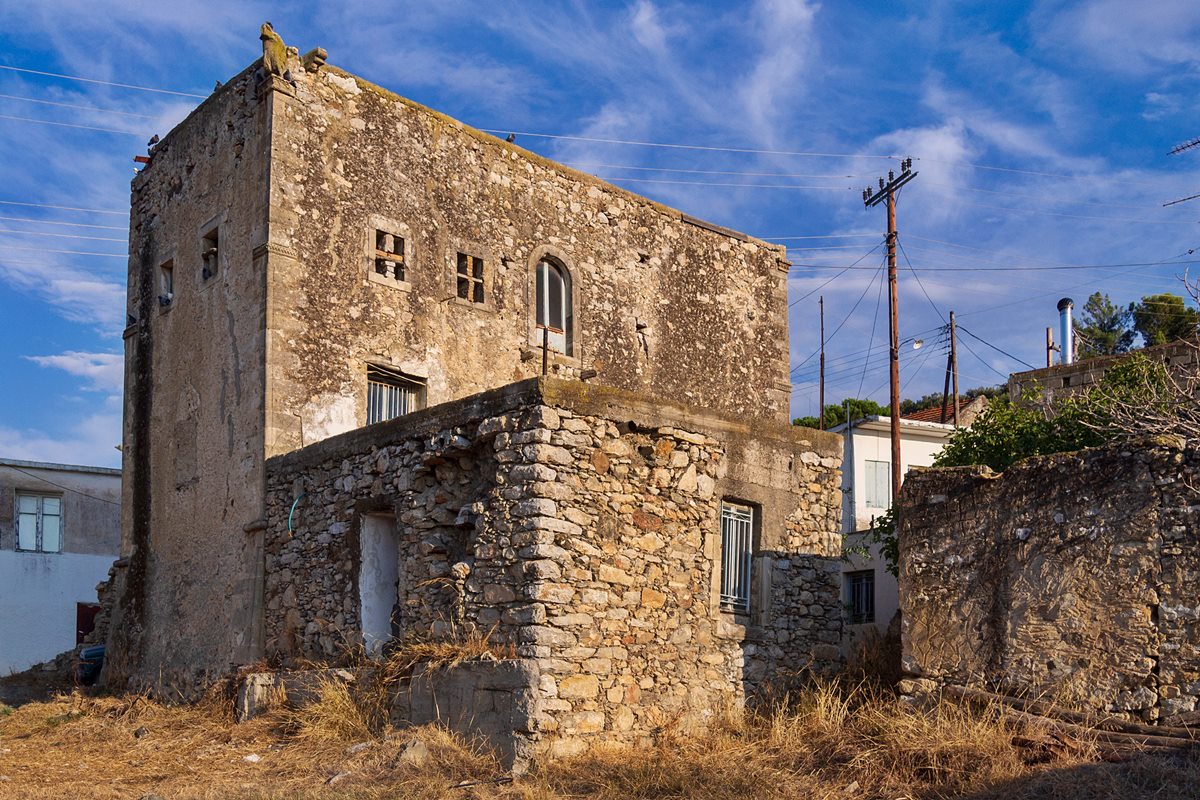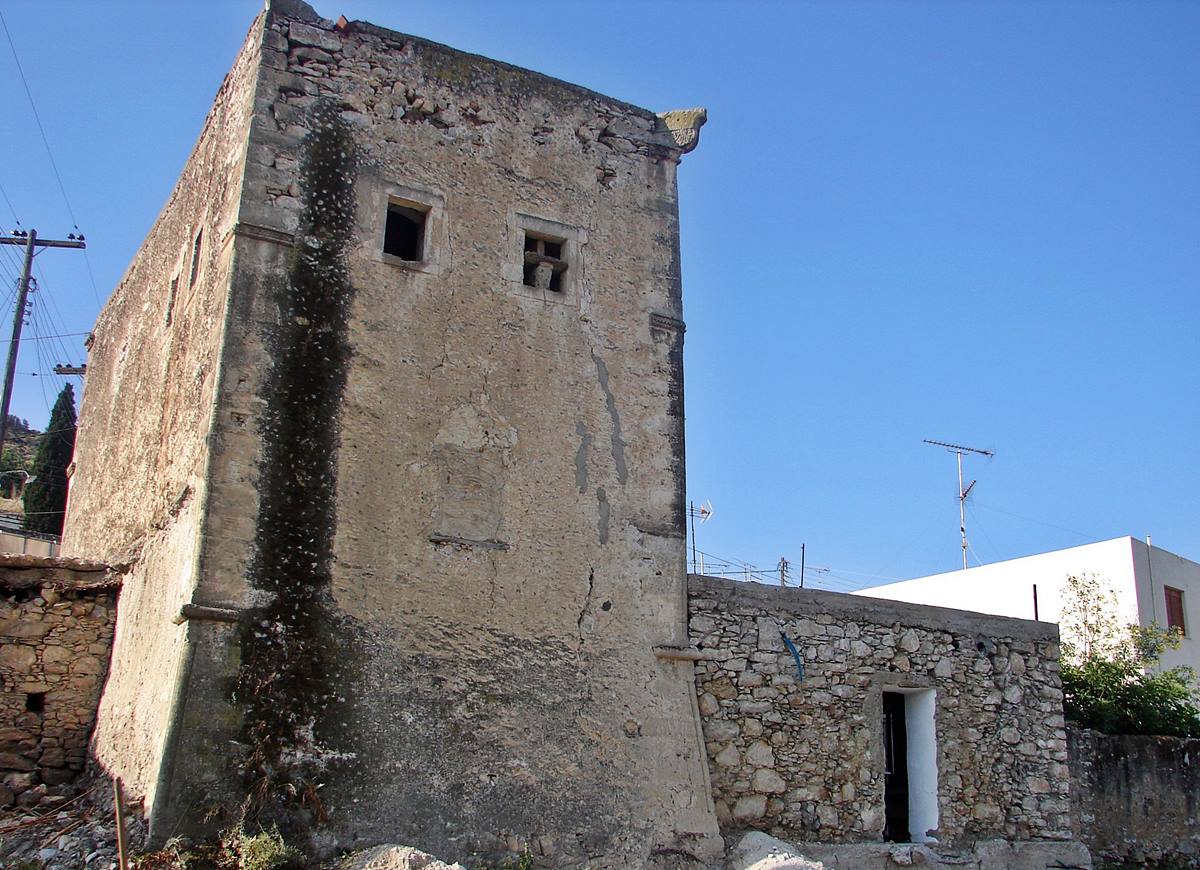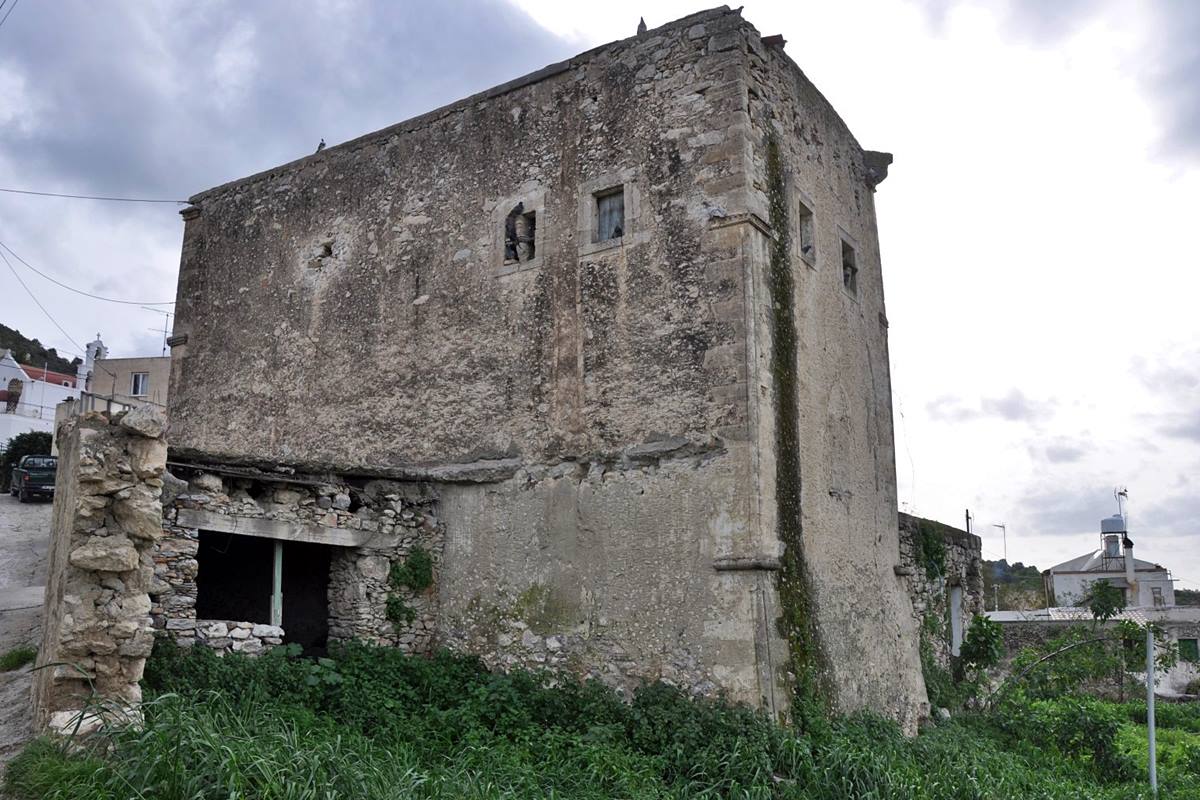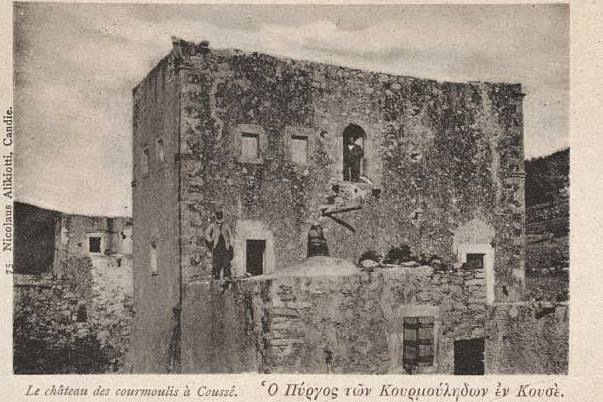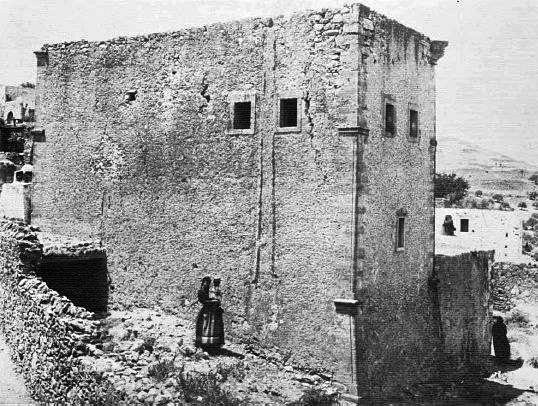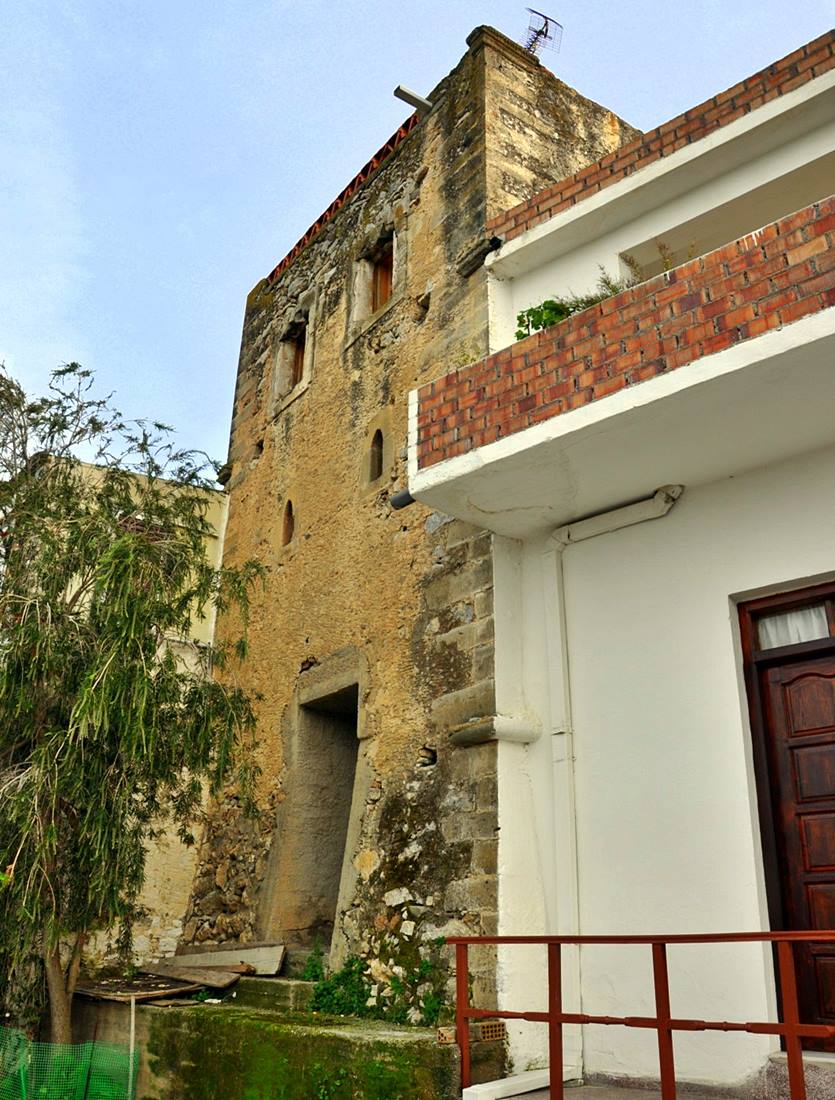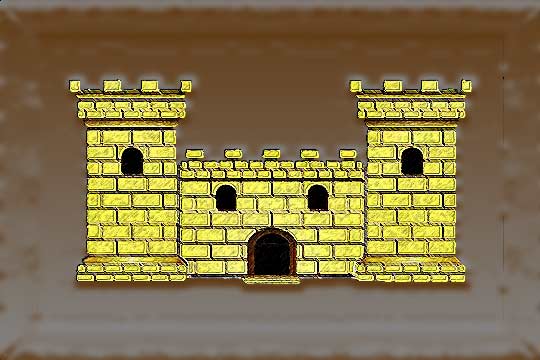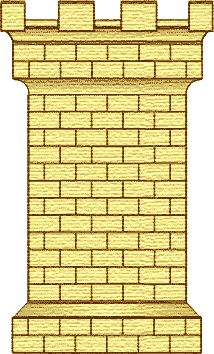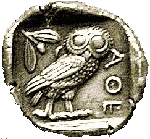Kouses, Faistos, Herakleion,Crete
Towers of Kourmoulis family
| Location: |
| In the village Kouses in Heraclion prefecture in Crete |
| Region > Prefecture: |  |
| Crete Herakleion | |
| Municipality > Town: | |
| City of Faistos • Kouses | |
| Altitude: | |
| Elevation ≈ 130 m |
| Time of Construction | Origin | |
| around 17th cent. | VENETIAN |
|
| Castle Type | Condition | |
| Tower House |
Relatively Good
|
Two tower houses in relatively good condition, in the village of Kouses, in the municipality of Phaistos, Crete.
One of the towers, the largest (photo 1-5), is located at the northern end of the village. The second (photo 6), much smaller, is located further inside the village, about 100 meters from the first and southwest of it, amongst newer houses in the village.
History
During the Venetian and Turkish periods, many individual towers were built in Crete. These were well-fortified residences of rich landowners. They were usually – but not always – located within residential areas.
Most of these towers were destroyed by the Cretans during the years of the uprising, up until the Cretan State in 1898.
The two towers in Kouses escaped this destruction.
The large tower of the Kourmoulis in Kouses is considered the best-preserved tower house in all of Crete, despite having undergone several modifications over the years.
The village of Kouses has existed for a long time. It is mentioned as Cussé in the 1577 work “Descrizione dell’ Isola di Creta” (Description of the Island of Crete) written by the Venetian Cretan Francesco Barozzi. It is also recorded in the 16th-century census of Piero Castrofilaca.
The village was owned by the Kourmoulis family, who were the local landowners and feudal lords.
It is not known exactly when the towers in the village were built. Perhaps this was towards the end of the 16th or in the 17th century. In other words, it is most likely that they were built during the Ottoman occupation, but the construction style is Venetian. We will characterize them as Venetian.
It is possible that there were other towers in the village that belonged to the Kourmoulis clan, which are no longer preserved.
The Kourmoulis family converted around 1680. They became Muslims, but according to local tradition, they remained crypto-Christians. They maintained their faith, and during the years of the revolution they participated in the struggle of the Greeks.
Structure, Fortification & Buildings
In general, the modifications that tower houses of this type have undergone over the centuries usually involve widening the existing openings (which were initially small and very few) and opening new openings and doors. Also, in most of them, the loopholes at the top were removed in order to create additional spaces in the roof.
Such modifications were also made to the towers of Kourmoulis.
In the large northern tower we observe a scrapa (conical widening of the base) which is characteristic of Venetian towers. Other Venetian elements are also observed such as the decoration at the 4 corners and the cordon wall decoations.
The addition of a house to the west side was made in 1864 according to an engraved inscription. At the same time, the northwestern entrance to the ground floor of the tower was opened. Other modifications were also made, such as closing the windows and moving the western entrance to the south side.
In the large tower of Kourmoulis, the ground floor is blind and was used for storing agricultural products. The entrance was on the first floor, where access was via a wooden escalator. The first floor housed the family utensils and was also used as a bedroom. The second floor was the main residence. A small door gave access to a wooden balcony. A small fireplace with an external chimney heated the floor and was also used as a kitchen.
The small tower had a simpler construction. Fewer defensive and Venetian features have survived due to its use as a residence until recently. Many additions and interventions were also made, such as the opening of the entrance and the destruction of the three battlements on the north side.
| First entry in Kastrologos: | April 2025 |
Sources
- Website Cretan Beaches, Οι πύργοι των Κουρμούληδων στον Κουσέ
- Photo 1 from Wikipedia, user C messier
- Facebook page VINTAGE-ΚΛΙΚ ΜΕ ΧΡΩΜΑ ΣΤΟ ΠΑΡΕΛΘΟΝ-ΚΡΗΤΗ-ΕΛΛΑΔΑ-ΚΟΣΜΟΣ, of the user Marinos Takitzis
- Website neakriti, post Οι πύργοι της Μεσαράς - Ο Πύργος του Κουρμούλη στον Κουσέ
- Ιστοσελίδα e-mesara, post Οι πύργοι των Κουρμούληδων στον Κουσέ της Μεσαράς
- Νίκος Σκουτέλης, «ΚΡΗΤΗ - Οι οικισμοί της υπαίθρου», Πολυτεχνείο Κρήτης, Χανιά, 2020
|
|
| Access |
|---|
| Entrance: |
| Free access to the surrounding area. No access into the interior. |



